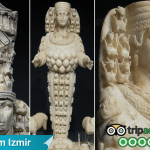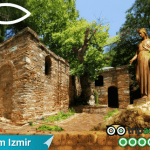The Hercules Gate in Ephesus, located at the upper end of Curetes Street, played an important role in dividing Ephesus into political and commercial sections. Due to its architectural design, the gate served as a physical barrier, restricting access to the political section by preventing horse-drawn carriages from passing through. Additionally, the high-relief depictions of Hercules on both sides of the gate symbolized strength and authority, discouraging unauthorized access to the administrative quarter.
Table of Contents
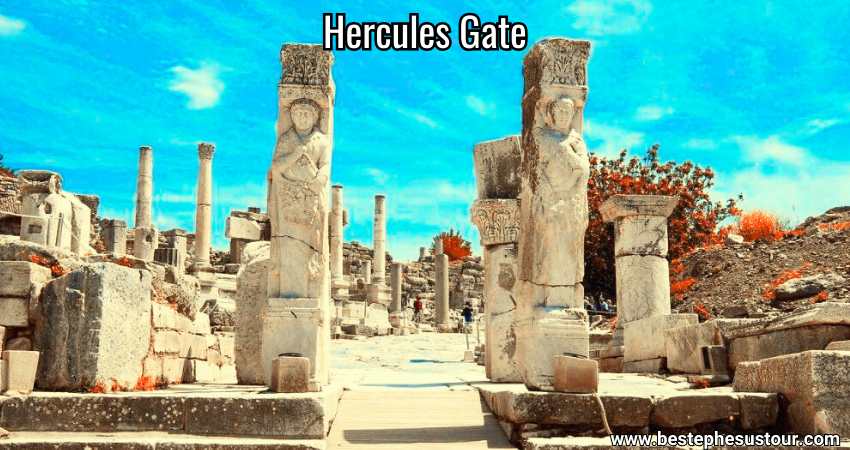
Architectural Features and History
The Hercules Gate derives its name from the reliefs of Hercules adorning its sides. These reliefs were originally carved in the 2nd century and relocated to their current position in the 4th century.
Only two gate columns have been uncovered, although historical records suggest that the original structure was a two-story building with six columns on each level. The ground floor featured an arched design, while the upper level consisted of a row of six columns, giving the gate an imposing appearance.
Mythological Connection: The Nemean Lion
The reliefs on the Hercules Gate depict the legendary hero draped in the skin of the Nemean Lion, referencing one of his Twelve Labors in Greek mythology.
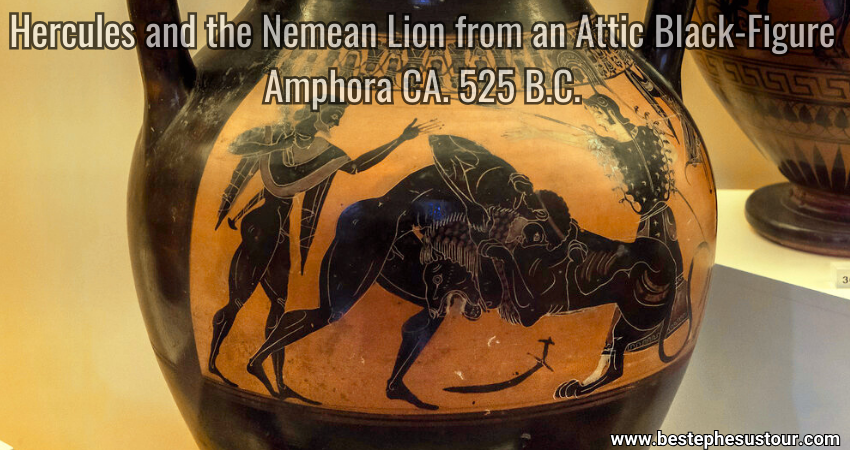
According to myth, the Nemean Lion was an enormous, nearly invulnerable beast that terrorized the region of Nemea. Since conventional weapons could not pierce its thick hide, Hercules ultimately strangled the lion before using its claws to remove its impenetrable skin. This victory cemented Hercules as a symbol of strength and resilience, an image reinforced by his depiction on the gate of Ephesus.
The Hercules Gate’s Connection to Curetes Street
Located at the beginning of Curetes Street, which extends from Domitian Square to the Library of Celsus, the Hercules Gate was a key passage in the city.
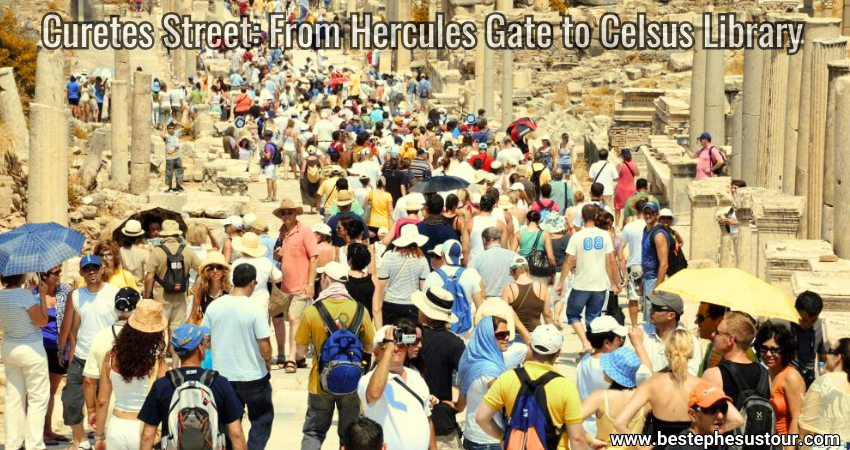
At the corners of the structure, pedestals once supported high-relief representations of Nike, which are now exhibited in Domitian Square. Some historians believe that the renowned Winged Nike relief, now displayed in Domitian Square, may have once been part of this gate.
The Fate of the Hercules Gate in Ephesus
Many architectural elements of the gate remain lost or undiscovered. Among the six columns on the upper floor, the two central ones feature high-relief depictions of Hercules, showing him draped in the hide of the Nemean Lion. These columns were originally positioned beneath an arch, which no longer exists. It is believed that some of the materials used in the Hercules Gate were relocated from another part of the city during the 4th century, suggesting that the structure underwent modifications over time.




